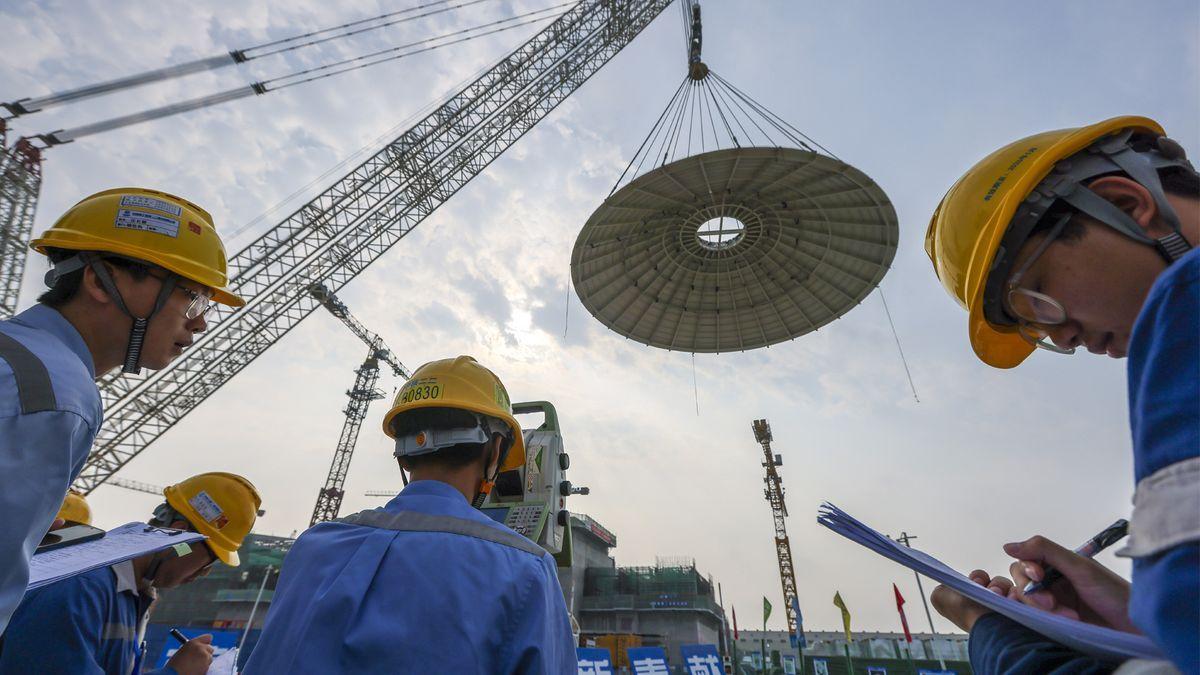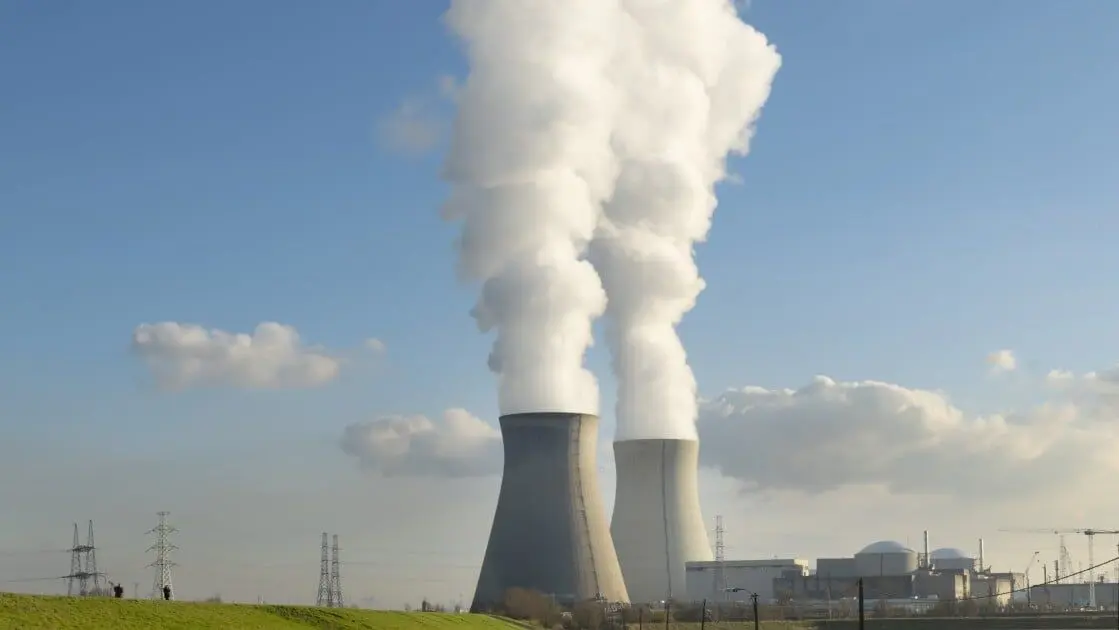AI and 3D Printing Revolutionize Safety Monitoring in Small Nuclear Reactors
2 Sources
2 Sources
[1]
AI and 3D printing combine for advanced monitoring of small nuclear reactors
by JooHyeon Heo, Ulsan National Institute of Science and Technology As the demand for electricity rises in the age of artificial intelligence (AI), global tech companies are focusing on small nuclear reactors as a sustainable energy solution. A new remote monitoring technology using advanced AI is capable of detecting potential hazards in these reactors within just two seconds. This innovative system enables real-time monitoring of internal conditions, significantly reducing management costs and enhancing safety. A research team, jointly led by Professor Im Doo Jung (Department of Mechanical Engineering, UNIST) and Professor Namhun Kim (Department of Mechanical Engineering/AI Graduate School, UNIST), along with Professor Hyungmo Kim from Gyeongsang National University, has introduced a smart component system designed for remote surveillance of small nuclear reactors. This system incorporates embedded optical fiber sensors that continuously monitor components and alert users to any abnormal conditions. The work is published in the journal Virtual and Physical Prototyping. The breakthrough lies in a novel technology that combines 3D printing with AI, enabling the rapid processing of multiple continuous variables from optical fiber sensors. The team successfully manufactured smart nuclear parts using a Directed Energy Deposition (DED) printing method, seamlessly integrating fiber optic sensors within the metal components. This design ensures stability even in the harsh environments typical of nuclear reactors. The AI system rapidly analyzes data from the optical sensors to monitor thermal deformation in real time, allowing operators to detect irregularities and assess conditions remotely through an augmented reality (AR)-based digital twin interface. In contrast to traditional large-scale nuclear reactors, microreactors (MRs) can provide stable power generation near energy-intensive facilities. However, maintaining safety in these plants is paramount. This new technology is poised to significantly enhance the safety and operational efficiency of next-generation small nuclear reactors by enabling AI to monitor critical thermal deformation signals that are often undetectable by human inspection. Professor Jung noted, "We tackled the challenges associated with traditional inspection methods through our AI convergence technology, which can greatly enhance the stable and efficient operation of next-generation small nuclear power plants." He further predicted that "this convergence technology could extend its applications beyond nuclear power, potentially benefiting diverse industries such as autonomous manufacturing systems, aerospace, and advanced defense."
[2]
Small nuclear reactors get safety boost with 2-sec AI hazard alert
At a time of increasing demand for sustainable electricity across the world, scientists are focusing to develop small nuclear reactors. To make innovations safer, researchers have turned to a new technology powered by AI that can detect potential hazards in these reactors in seconds. Called smart component system, the technology provides remote surveillance of small nuclear reactors. Developed by researchers at UNIST, the system includes embedded optical fiber sensors to monitor components and send alerts during abnormal conditions. The breakthrough lies in a novel technology that combines 3D printing with AI, enabling the rapid processing of multiple continuous variables from optical fiber sensors. The team successfully manufactured smart nuclear parts using a Directed Energy Deposition (DED) printing method, seamlessly integrating fiber optic sensors within the metal components, reported TechExplore. A small nuclear reactor is a microreactor, a compact reactors that will be small enough to transport by truck and could help solve energy challenges in a number of areas. Microreactor designs vary, but most would be able to produce 1-20 megawatts of thermal energy that could be used directly as heat or converted to electric power. They can be used to generate clean and reliable electricity for commercial use or for non-electric applications such as district heating, water desalination and hydrogen fuel production. Most designs will require fuel with a higher concentration of uranium-235 that's not currently used in today's reactors, although some may benefit from use of high temperature moderating materials that would reduce fuel enrichment requirements while maintaining the small system size.
Share
Share
Copy Link
Researchers develop an AI-powered smart component system for remote monitoring of small nuclear reactors, combining 3D printing and optical fiber sensors to detect hazards within two seconds.

Innovative AI-Powered Monitoring System for Small Nuclear Reactors
In response to the growing demand for sustainable energy solutions in the AI era, researchers have developed a groundbreaking remote monitoring technology for small nuclear reactors. This innovative system, which combines artificial intelligence and 3D printing, can detect potential hazards within a mere two seconds, significantly enhancing safety and operational efficiency
1
2
.The Smart Component System
A research team led by Professors Im Doo Jung and Namhun Kim from the Ulsan National Institute of Science and Technology (UNIST), in collaboration with Professor Hyungmo Kim from Gyeongsang National University, has introduced a smart component system for remote surveillance of small nuclear reactors
1
.The system incorporates embedded optical fiber sensors that continuously monitor reactor components and alert users to any abnormal conditions. This breakthrough technology integrates 3D printing with AI, enabling rapid processing of multiple continuous variables from the optical fiber sensors
1
2
.Advanced Manufacturing and AI Integration
The team successfully manufactured smart nuclear parts using a Directed Energy Deposition (DED) printing method. This process seamlessly integrates fiber optic sensors within metal components, ensuring stability even in the harsh environments typical of nuclear reactors
1
.The AI system rapidly analyzes data from the optical sensors to monitor thermal deformation in real-time. This allows operators to detect irregularities and assess conditions remotely through an augmented reality (AR)-based digital twin interface
1
.Related Stories
Enhancing Safety and Efficiency of Microreactors
Microreactors (MRs), a type of small nuclear reactor, can provide stable power generation near energy-intensive facilities. These compact reactors, small enough to be transported by truck, can produce 1-20 megawatts of thermal energy for various applications, including electricity generation, district heating, water desalination, and hydrogen fuel production
2
.The new AI-powered monitoring technology is poised to significantly enhance the safety and operational efficiency of these next-generation small nuclear reactors. It enables AI to monitor critical thermal deformation signals that are often undetectable by human inspection
1
.Future Applications and Implications
Professor Jung highlighted that this convergence technology could extend its applications beyond nuclear power, potentially benefiting diverse industries such as autonomous manufacturing systems, aerospace, and advanced defense
1
.As the world continues to seek sustainable energy solutions, this innovative approach to reactor safety and monitoring represents a significant step forward in making small nuclear reactors a viable and secure option for meeting growing energy demands in the age of AI.
References
Summarized by
Navi
[2]
Related Stories
Microsoft and Idaho National Laboratory Partner to Accelerate Nuclear Power Licensing with AI
17 Jul 2025•Technology

Small Nuclear Reactors: A Gamble to Power AI's Surging Energy Demands
29 Sept 2025•Technology

Google and Westinghouse Partner to Revolutionize Nuclear Reactor Construction with AI
17 Jul 2025•Technology

Recent Highlights
1
Google launches Gemini 3 Flash as default AI model, delivering speed with Pro-grade reasoning
Technology

2
OpenAI launches ChatGPT app store, opening doors for third-party developers to build AI-powered apps
Technology

3
OpenAI launches GPT Image 1.5 as AI image generator war with Google intensifies
Technology





